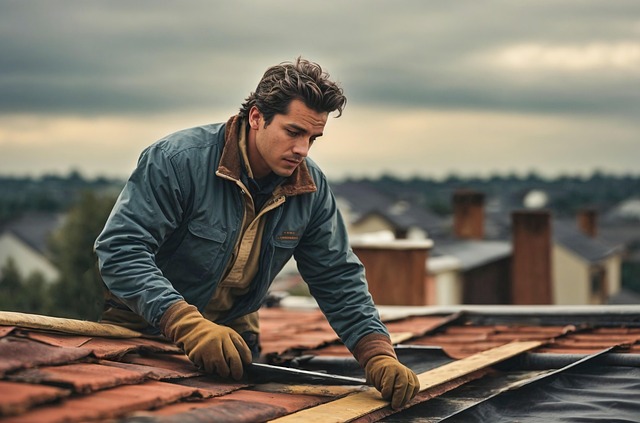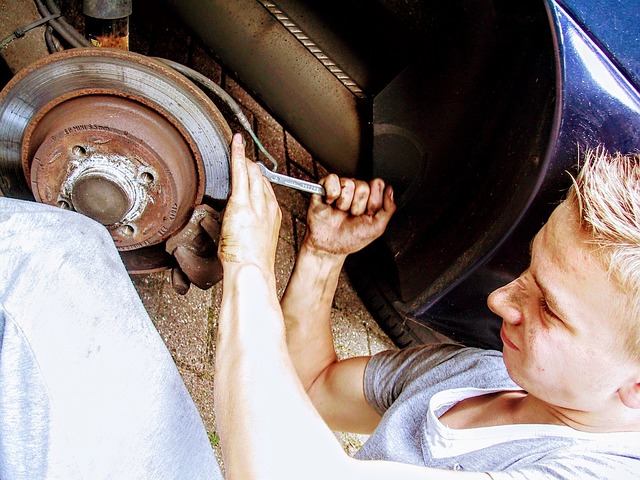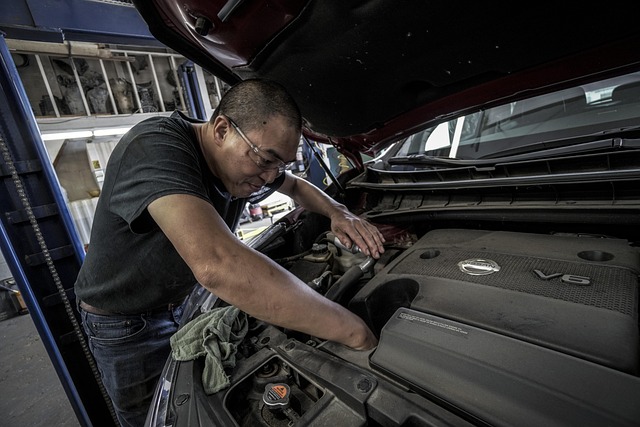In unforeseen events like severe weather or structural failures, immediate action for emergency roof repair is crucial to mitigate safety risks and water damage. Major issues such as missing shingles, leaking roofs, or damaged flashing require certified roofing contractors. Early detection of roof damage, caused by extreme weather, fire, aging, or neglect, is vital for effective emergency repairs. Gather essential tools like tarps and duct tape, temporarily seal the roof, and await professional help. Specialized equipment enables efficient temporary fixes until permanent repairs can be made. Regular maintenance, including annual inspections and high-quality materials, prevents costly damage.
In the face of unexpected weather events, a damaged roof can pose significant risks. This comprehensive guide delves into the crucial aspect of emergency roof repairs, equipping homeowners with essential knowledge. We explore common causes of roof damage requiring immediate attention and provide step-by-step instructions for temporary fixes. From specialized tools to cost considerations and preventive measures, learn how to navigate emergency roof repair efficiently and securely.
Understanding Emergency Roof Repairs: When to Call a Professional

In the face of unforeseen circumstances, such as severe weather conditions or sudden structural failures, immediate attention is crucial when it comes to roof repairs. Emergency roof repair refers to the swift and specialized intervention needed to address critical roofing issues that pose safety hazards or prevent water intrusion. This could include missing shingles, leaking roofs, or damaged flashing—problems that require prompt action to avoid further damage to properties and ensure occupant safety.
Knowing when to call a professional for emergency roof repairs is essential. While minor issues like loose gutters or a few missing shingles might be temporarily addressed, more severe problems warrant the expertise of certified roofing contractors. They possess the necessary tools, knowledge, and experience to assess and fix complex roof damage efficiently. Prompting factors include water stains on ceilings or walls, noticeable drops in attic insulation, or any signs of structural weakness that could indicate a larger problem beyond what amateur repairs can handle.
Common Causes of Roof Damage Requiring Immediate Attention

Roof damage can be a serious issue, often requiring immediate attention during emergencies. Common causes include extreme weather conditions such as heavy storms, high winds, and hail, which can lead to missing or damaged shingles, leaks, and structural compromise. Another frequent culprit is fire, whether from natural disasters like wildfires or accidental outbreaks within homes, capable of causing extensive roof damage.
Additionally, aging roofs are susceptible to various issues like deteriorated underlayment, rotted wood, and rusted flashing, all of which can be catalyzed by prolonged exposure to elements. Even minor neglect or improper initial installation can lead to problems escalating over time. Prompt recognition of these issues is crucial for effective emergency roof repair, ensuring the preservation of your home’s integrity and preventing further complications.
Essential Steps for Temporary Roof Fix in an Emergency

In a roof emergency, acting swiftly is paramount. The first step in any temporary emergency roof repair is to ensure your safety and that of others. Evacuate the area if necessary and assess the damage from a secure distance. Look for loose debris, cracks, or missing sections that could pose a risk.
Once you’ve established safety, gather essential tools like tarps, duct tape, and a ladder (if accessible). Temporarily securing the roof with tarps can prevent further water intrusion while you wait for professional help. Secure the tarps tightly around the edges using duct tape or any available fasteners. This makeshift fix offers crucial protection until a permanent emergency roof repair can be conducted.
Specialized Tools and Equipment for Efficient Emergency Repair

When it comes to emergency roof repair, having the right tools and equipment is paramount for efficient and effective fixing. Specialized tools designed for such situations are crucial, as they can make all the difference in terms of speed and quality of the repair. For instance, high-quality ladders that can withstand harsh conditions and provide stable access points are essential. Additionally, roofers often rely on specialized tarps to temporarily cover damaged areas, preventing further water intrusion until a more permanent fix is installed.
Another critical tool for emergency repairs is a well-stocked kit containing various types of sealant, screws, and other fasteners. These tools allow roofers to quickly assess the damage and implement temporary fixes that can withstand adverse weather conditions. With these specialized equipment at hand, professionals can navigate through emergencies and ensure minimal disruption to homes or buildings while awaiting more comprehensive repairs.
Cost Considerations: Budgeting for Emergency Roof Replacement or Repair

When it comes to emergency roof repair, cost considerations are paramount. The budget for this type of work can vary significantly depending on several factors, such as the extent of damage, the materials needed, and labor costs in your area. It’s important to remember that an emergency repair might be a temporary fix, so if a full replacement is inevitable, budgeting for both options is essential.
In preparing for an emergency roof repair or replacement, start by assessing your insurance coverage. Many policies cover storm-related damage, but the specifics can differ. Reviewing your policy and understanding deductibles will help you plan financially. Additionally, consider the long-term benefits of investing in high-quality materials and skilled labor. While initial costs might be higher, they can prevent future damage and ensure a more durable repair, saving you money in the long run.
Preventive Measures: Fortifying Your Roof Against Future Emergencies

Regular maintenance is key to preventing emergency roof repairs. Inspect your roof for any signs of damage, such as missing shingles or leaks, at least twice a year. Addressing issues promptly can prevent them from escalating into costly emergencies.
To fortify your roof against future emergencies, consider enhancing its structure and materials. Using high-quality roofing materials, like impact-resistant shingles, can better protect against extreme weather conditions. Additionally, ensuring proper ventilation reduces the risk of internal damage caused by excessive heat or moisture buildup. Regular cleaning and debris removal also play a crucial role in maintaining your roof’s integrity.
